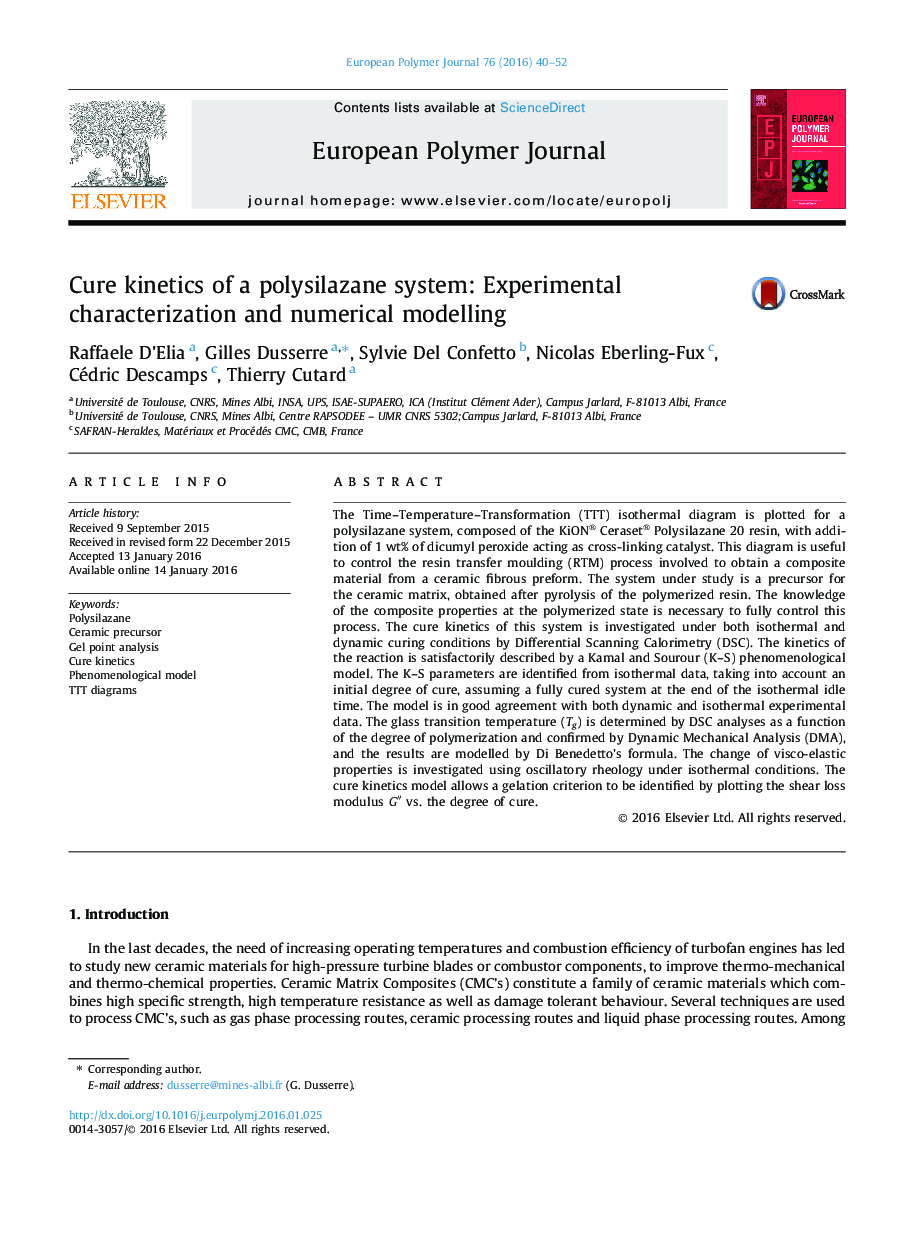| کد مقاله | کد نشریه | سال انتشار | مقاله انگلیسی | نسخه تمام متن |
|---|---|---|---|---|
| 1401508 | 1501359 | 2016 | 13 صفحه PDF | دانلود رایگان |
• The Time–Temperature–Transformation (TTT) diagram for a polysilazane resin with dicumyl peroxide catalyst are obtained using DSC and oscillatory rheology tests.
• Isothermal and dynamic kinetics are described by a Kamal–Sourour model.
• The parameter λ of Di Benedetto equation is related to the Cp change across Tg.
• Gelation is identified by oscillatory rheology according to G″ inflexion criterion.
The Time–Temperature–Transformation (TTT) isothermal diagram is plotted for a polysilazane system, composed of the KiON® Ceraset® Polysilazane 20 resin, with addition of 1 wt% of dicumyl peroxide acting as cross-linking catalyst. This diagram is useful to control the resin transfer moulding (RTM) process involved to obtain a composite material from a ceramic fibrous preform. The system under study is a precursor for the ceramic matrix, obtained after pyrolysis of the polymerized resin. The knowledge of the composite properties at the polymerized state is necessary to fully control this process. The cure kinetics of this system is investigated under both isothermal and dynamic curing conditions by Differential Scanning Calorimetry (DSC). The kinetics of the reaction is satisfactorily described by a Kamal and Sourour (K–S) phenomenological model. The K–S parameters are identified from isothermal data, taking into account an initial degree of cure, assuming a fully cured system at the end of the isothermal idle time. The model is in good agreement with both dynamic and isothermal experimental data. The glass transition temperature (Tg ) is determined by DSC analyses as a function of the degree of polymerization and confirmed by Dynamic Mechanical Analysis (DMA), and the results are modelled by Di Benedetto’s formula. The change of visco-elastic properties is investigated using oscillatory rheology under isothermal conditions. The cure kinetics model allows a gelation criterion to be identified by plotting the shear loss modulus G″G″ vs. the degree of cure.
Figure optionsDownload as PowerPoint slide
Journal: European Polymer Journal - Volume 76, March 2016, Pages 40–52
